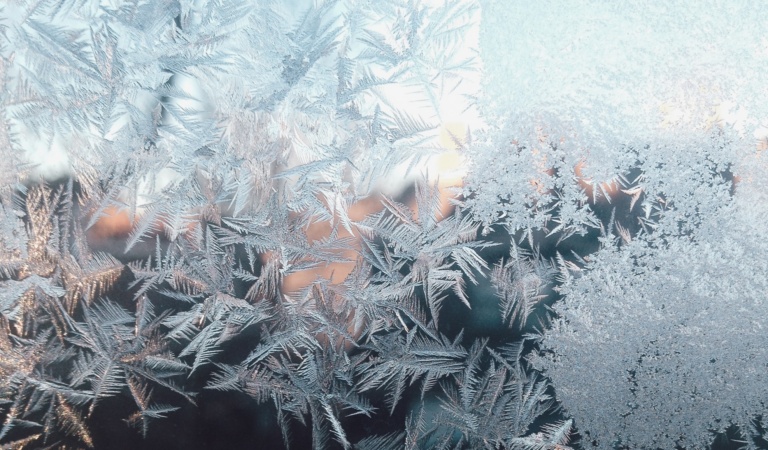 20th January 2023
20th January 2023Is It Possible For A Water Tank To Freeze?
We’ve been experiencing some extremely cold temperatures in recent weeks – including the impressive week of sub-zero temperatures – and it’s been a problem for many. Mains breaks, service outages, and neglection of water tanks keeps work crews and operators very busy.
Winter is difficult to plenty, more so than any other season because of it’s chilling temperatures and the fatigue it seems to bring along. Planning water tank inspections is easy enough but actually carrying those out? And in sub-zero temperatures? It’s not as appealing anymore.
Yet still, it needs to be done. Otherwise, how will you know if the pipes have frozen over? Or that the tank has sustained any damage?
Where Ice Forms in Water Tanks
When the temperatures continue to just drop, drop, drop, this creates a little bit of a problem. Ice can begin to form inside and outside the tank and the thermal stratification in un-mixed water tanks may break down, too.
Any tank that is located above ground in a climate that is exposed to the cold, they are susceptible to freezing. Because the temperature isn’t the only problem they face; it’s the biting chill of the wind, also. Both of which quickly removes heat from any part of the structure and content inside.
And if the tank is elevated, there’s more chance of ice forming.
Collars or ‘Ice Donuts’
One of the first places ice forms is on the sides of the tank which are exposed because of the fill-drain cycle. With every cycle, the thicker the collar and, subsequently, the heavier the ice layer becomes.
The weight and thickness of the ice is what later becomes an issue as it leads to consequences with the integrity of the tank.
Floating Ice
Depending on numerous things – tank operation, location, material – layers of ice can develop within the tank. These floating ice layers will start thin but as they continue to form, will eventually become much thicker.
Cold weather and static water contribute to floating ice forming which is why the water inside the tank is susceptible.
Ventilation
Vents are designed to let air in and out of the tank during cycles and when the tank is too full, an overflow happens. This is a way to let water out in response to the fullness of the tank.
As the vents and overflows have screens over them to prevent insects in summer, ice can form and block them. In turn, this limits or can completely block the flow of air and water. Even worse is that a leaking overflow results in even more ice as the liquid is exposed to freezing temperatures.
What Kind Of Damage Can My Tank Sustain?
With the different areas that ice forms, and how thick, it’s not really a surprise that your tanks can sustain damage from its formation. Operationally, storage volume will be reduced, impacting the potable water supply and fire-fighting reserves.
Physically, damage due to ice can mean expensive or extensive repairs are necessary.
Coating Damage
Those heavy collars of ice that form on the side of tanks can have a serious impact. They might dislodge ladders or piping from the tank walls. So that, along with floating ice causing friction against the walls, causes internal coatings to be damaged.
Blocked Ventilation
The ice forming on the screen of a vent and causing a blockage can lead to the tank failing. Just from that one small thing, really? Really.
Of course, the main design for the vents is for air flow but they also help to protect the tank from overpressure. Therefore, blockage means more pressure and pressure means stress. And stress… well stress usually means breaking down.
Preventing Freezing Water Tanks
Fortunately, things can be done to limit the chances of your water tank freezing.
1. A Water Heating System
Tanks may need heating systems if they’re in an exceptionally cold climate. This doesn’t completely mitigate the possibility that ice will form, but if it can maintain the temperature of the water at the bottom of the tank, floating ice is less likely to form.
2. Water Tank Insulation
Ensuring that your tank’s model has insulation as a feature is one of the simplest ways to avoid worrying about freezing water tanks in future instances.
Take GRP, glass-reinforced plastic, tanks for example. By nature, the material of a GRP tanks is very insulating.
3. Checking For Physical Damages
Regular inspection for any physical marks such as cracks or leaks is important for maintaining the condition of your tank. External pipes are also just as important to check over, more so in the winter months.
Cracks allow the cold to permeate the tank more easily, like leaks, and will just lead to the freezing happening faster.
Trust in Cold Water Storage
Freezing water tanks is a rightful concern for you to have during any winter period, not to mention one with constant fluctuating temperatures reaching sub-zero. But with the right kind of tank, and the proper maintenance, that doesn’t have to be a concern.
Using our specialist knowledge, we’re able to deliver the right solution every single time and ensure a positive experience for our client. Because we offer repairs, refurbishment, and tank installation, we’ll never give you biased advice. Only what we think is best based on the circumstances of your tank.
Across the UK, our team of expert engineers delivers bespoke projects and have built such an outstanding reputation amongst out clients. Get in touch with the CWS team if you’re interested in any of our services or would like some advice.
Give us a buzz on 01943 872 311 or send us an email!